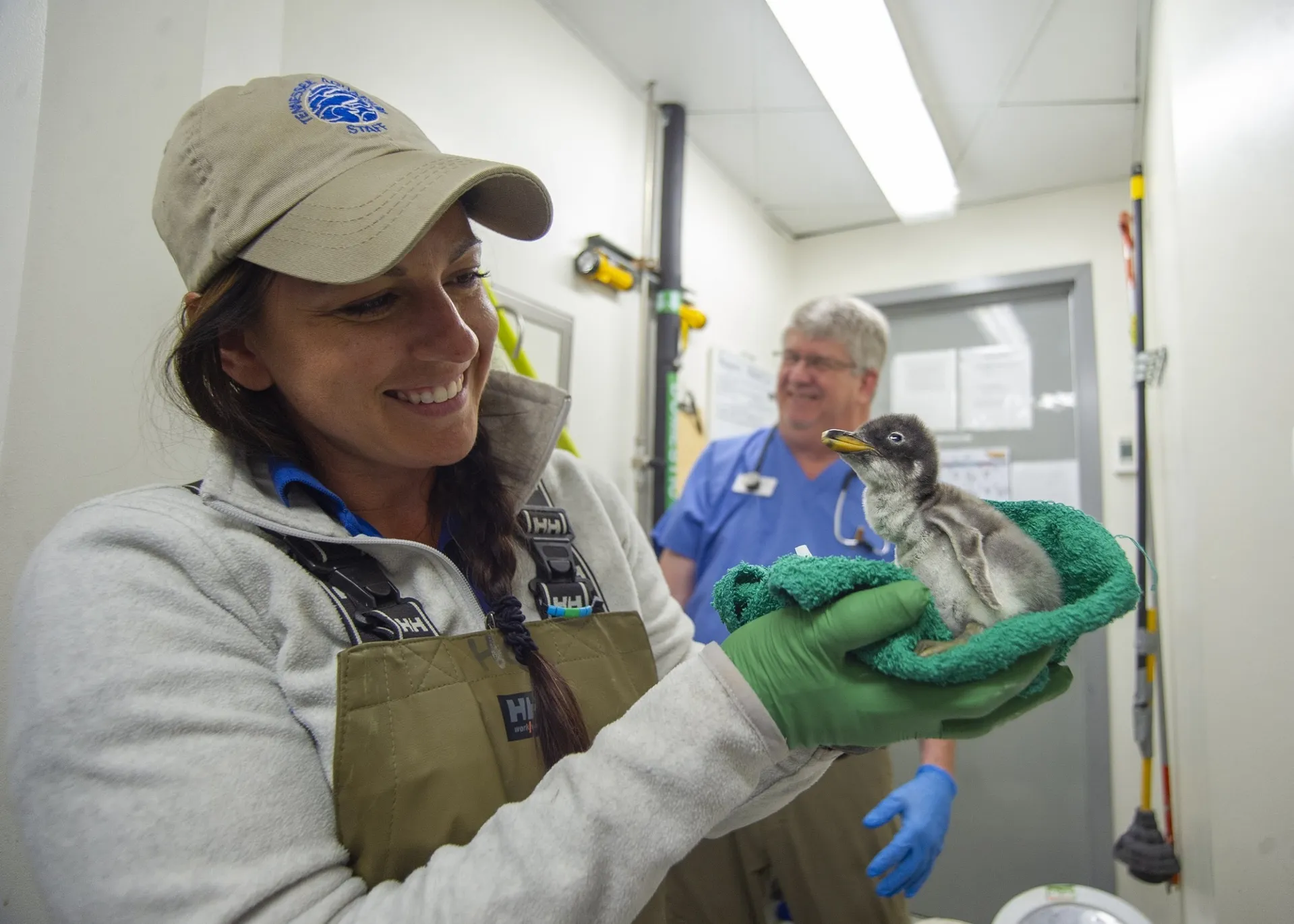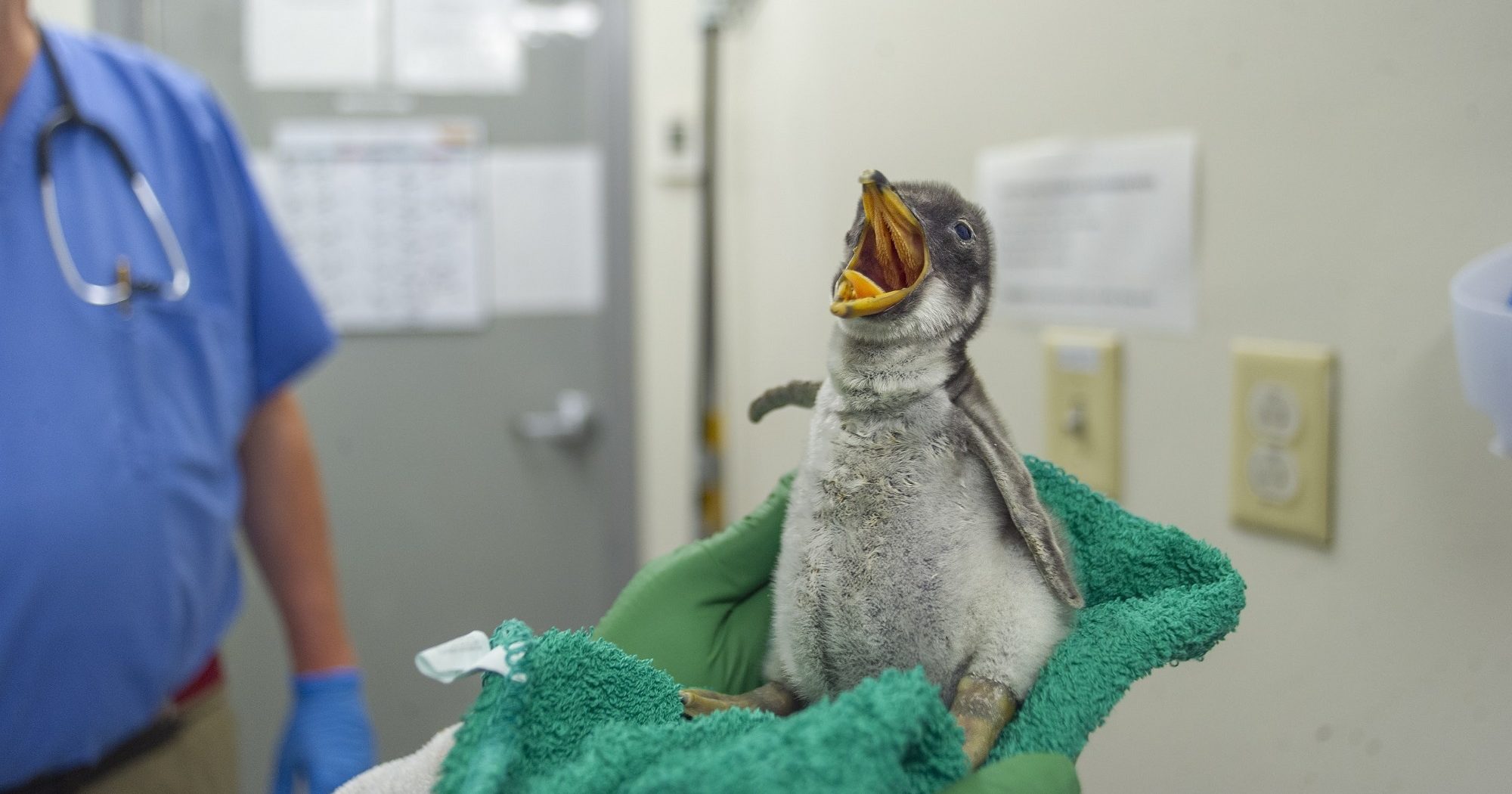Chattanooga, Tenn. (July 27, 2021) – As any parent knows, kids tend to do whatever you least expect. In the case of an endangered Four-eyed Turtle hatchling at the Tennessee Aquarium, however, merely existing was — in itself — a huge surprise.
On July 11, a volunteer was tending an enclosure in a backup area of the River Journey building. This habitat was only supposed to house an endangered female Four-eyed Turtle (Sacalia quadriocellata), but the volunteer soon discovered that the adult turtle wasn’t alone. Perched atop a layer of vegetation was a tiny hatchling that, by all accounts, shouldn’t even have been there.
“The adult female hadn’t been with a male in over a year, so we did not check to see if she had laid this year,” says Bill Hughes, the Aquarium’s herpetology coordinator. “To say the least, finding an egg, let alone a hatchling, was unexpected.”
Hughes says females of some turtle species have been documented to store sperm until conditions favor fertilization. This adaptation may be behind the unexpected hatching, but at the moment, the tiny turtle’s origins remain a mystery.
The baby Four-eyed joins another that hatched on June 10 from an egg husbandry staff were aware of and had been monitoring. The first hatchling emerged from an egg laid on April 15. Both are eating and doing well.
Since 2007, the Aquarium has successfully hatched 47 Four-eyed Turtles, which are so named for the distinctive eye-like markings on the back of their heads. Found only in mountainous streams and ponds in Southeast Asian, this species has been listed as endangered by the International Union for Conservation of Nature since 2000, thanks to over-collection in the wild and habitat loss.
“These turtles fall under a Species Survival Plan that I manage,” says Hughes, who also oversees a program managing the closely related, critically endangered Beal’s Four-eyed Turtle (Sacalia bealei). “Increasing their population is a long-term goal, so every hatchling is a step further in the right direction.”
Visitors to the Aquarium can see adorable examples of Four-eyed and Beal’s Four-eyed Turtles in the hatchling nursery of River Journey’s Turtles of the World gallery.
But tiny turtles aren’t the only recent arrivals at the Aquarium.


On June 24, the Aquarium celebrated the arrival of a Gentoo Penguin chick in the Penguins’ Rock gallery. It began the herculean task of leaving its egg two days earlier on June 22, when animal care specialists first saw its beak and heard its squeaking vocalizations. This fuzzy newcomer is the offspring of Flower (mom) and Blue (dad), a newly minted pair of veteran parents.
During a routine veterinary checkup the day after it hatched, the chick weighed 132 grams — about 4.5 ounces. After a month of attentive care by its parents and close observation by Aquarium staff, the formerly tiny, peeping ball of fluff now weighs 2.4 kilograms (5.3 pounds), an increase of more than 1,800 percent. If a human child were to grow at the same rate, a newborn weighing seven pounds at birth would tip the scales at 127 pounds four weeks later.
Size isn’t the only thing that’s bigger about the chick, though, says Loribeth Lee, the Aquarium’s senior aviculturist.
“For the first two weeks, it was pretty mellow, just looking around and studying everything,” Lee says. “Once two weeks hit, though, it developed a strong personality and loves to yell and slap at anything that moves too close!”
At the moment, the chick is still being fed by its parents, but Aquarists plan to begin hand-feeding it solid food in the next two weeks. Visitors to the Aquarium can observe the chick in its nest, which is encircled by clear acrylic panels, for the next six to seven weeks, when it will be old enough to join the rest of the colony. Its gender will remain unknown, pending the results of a routine blood test in November.
To keep tabs on the Aquarium’s Gentoo and Macaroni Penguins, digital visitors can watch a live video feed of the Penguins’ Rock gallery at tnaqua.org/live/penguins-rock/.
Elsewhere in the Ocean Journey building, a trio of juvenile Long-spine Porcupinefish (Diodon holocanthus) are being raised in a culturing facility near the Aquarium’s Secret Reef exhibit.
Despite only being as large as a thumbnail, these two-month-old pufferfish are dead ringers for their round-bodied, spine-covered parents. Under the care of aquarists and a steady diet of brine shrimp, they’re gradually increasing in size like balloons inflating in slow motion.
Once large enough — likely this fall —they’ll be placed on display in the Aquarium’s new larval fish exhibit in the Ocean Journey building.
The fish are the offspring of five adults housed in an off-campus care facility. Eggs collected from this facility were taken to the Aquarium, which has been conducting pioneering work into raising marine fish in-house since early 2017. Eventually, the adults will be brought to Ocean Journey to join the bustling aquatic community of the Secret Reef exhibit.
Whatever their age, there’s no denying the charisma Long-spine Porcupinefish exude, says Senior Aquarist Kyle McPheeters.
“These are definitely one of the cutest fish we work with, especially as babies,” he says. “But even the adults have a really outgoing personality and a very expressive face.”
